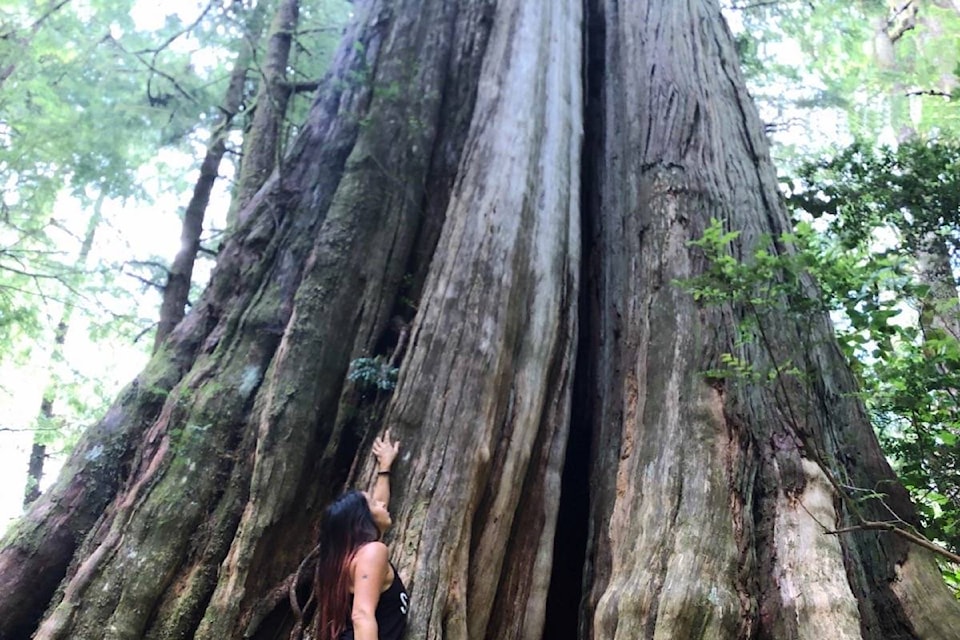As described in their recent report, the B.C. government is taking a new, holistic approach as a first step for the benefit of all British Columbians to protect old-growth forests.
“This will include the protection of nine areas throughout the province, totalling almost 353,000 hectares,” the report states.
“In a break from the divisive practices of the past, government will engage the full involvement of Indigenous leaders and organizations, labour, industry and environmental groups to work together in conserving biodiversity while supporting jobs and communities, especially on the coast and Vancouver Island.”
In July of 2019, government appointed old growth panel members Garry Merkel and Al Gorley to lead an old-growth strategic review.
They gathered input and examined old growth management from a variety of perspectives.
On April 30, 2020, they submitted 14 recommendations to the province in their report. As described in the report: A New Future for Old Forests, Merkel and Gorley outline a four-phased process government should undertake to develop and implement an old growth strategy.
The strategy consists of immediate actions in the first six months followed by three other phases up to 36 months.
The recommendations were grouped as follows:
Required Conditions for Change
1. Indigenous involvement
2. Prioritize ecosystem health
3. Adopt a three-zone management framework
4. Strengthened governance
5. Better public information
Immediate Responses
6. Defer development on ecosystems at very high risk
7. Bring into compliance existing requirements and guidelines
Improve Management
8. Monitoring and evaluation
9. Objectives and targets framework
10.Update targets and guidance
11. Improved inventory (mapping and classification)
12. Innovative practises
Orderly Transitions
13. Implement the new policies and strategies for the management of old forests through mandatory provincial and local transition plans
14. Support forest sector workers and communities as they adapt to changes resulting from a new forest management system
Further work is also underway to protect up to 1,500 exceptionally large, individual trees under the Special Tree Protection Regulation. This builds on government’s announcement in 2019 that it would develop a permanent approach to protecting big, iconic trees.
For those readers who would like some additional background on the old growth issue, I suggest an April 2020 report entitled: A Last Stand for Biodiversity by authors Karen Price, Rachel F. Holt, and Dave Daust.
Read more: What exactly is ‘old growth’ B.C. forest, and how much is protected?
This report has lots of pictures, maps and charts showing the extent of the provinces old growth. They use site index values to classify the forests growth potential. Site index is defined as the average height that free growing, undamaged trees of a given species can achieve in 50 years growth.
As they point out only a tiny proportion of B.C.’s remaining old forest (three per cent) supports large trees: roughly 380,000 hectares have a site index 20 to 25 metres and only roughly 35,000 hectares of old forest have a site index greater than 25 metres
These types of forests match most people’s vision of old growth and provide unique habitats, structures and spiritual values associated with large trees.
The large trees are usually the most valuable for lumber production hence these old forests have dwindled considerably due to intense harvest so that only 2.7 per cent of this three per cent is currently old.
“These ecosystems are effectively the white rhino of old growth forests,” states the report.
“Over 85 per cent of productive forest sites have less than 30 per cent of the amount of old expected naturally, and nearly half of these ecosystems have less than one per cent of the old forest expected naturally. This current status puts biodiversity, ecological integrity and resilience at high risk today.”
Read more: B.C. suspends some old-growth logging, consults communities
Jim Hilton is a professional agrologist and forester who has lived and worked in the Cariboo Chilcotin for the past 40 years. Now retired, Hilton still volunteers his skills with local community forests organizations.
